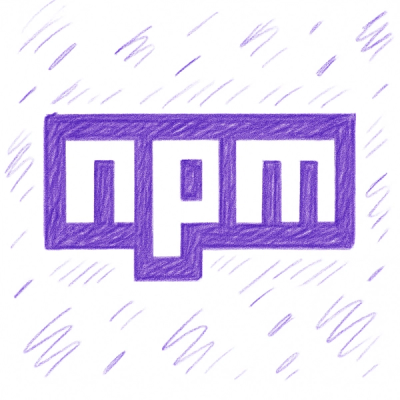
Security News
npm Adopts OIDC for Trusted Publishing in CI/CD Workflows
npm now supports Trusted Publishing with OIDC, enabling secure package publishing directly from CI/CD workflows without relying on long-lived tokens.
Ansible tool to manage the deployment of ssh keys and user profiles to client servers
The gem is published on RubyGems.org.
$ gem install appforce-spawn
This will install the gem and script.
It requires a .appforce configuration file in your home directory to operate. Once the gem is installed you can run appforce-spawn -D to dump an example config to your home directory (~/.appforce.example). This will have all you need, except for your API token. This token can be found by logging into the API Admin. If you do not have an account on the Admin, please contact Derek Smith.
The tool has help information and a list of available action commands.
$ appforce-spawn -h
USAGE: appforce-spawn [options]
-a, --action [ACTION] Action to perform. Use '-l' to view all available actions
-l, --list_actions List available Actions
-C, --client [CLIENT API NAME] API Client Name to use for calls
-c, --config [PATH] Optional custom config file
-D, --dump-config Generate a example config template (to ~/.appforce.example)
-v, --verbose If set, print verbose output
-h, --help Show help documentation
$ appforce-spawn -l
== Available Actions ==
clients # Retrieve a complete list of Clients
generate # Build out the Ansible template for a Client (client API name is required)
client:hosts # Retrieve a Hosts file for a Client (client API name is required)
client:users # Retrieve a Users file for a Client (client API name is required)
client:vars # Retrieve a Vars file for a Client (client API name is required)
ping # Test connection to host and API access
ping:host # Test if API is available
ping:api # Test if you have access to the API
spawn # Run Ansible Playbook to spawn users to Client hosts
spawn:command # Display Ansible command to run Playbook for a Client
spawn:ping # Ansible ping Client hosts in the 'hosts' file
spawn:ping:command # Display ansible ping command
=========================
appforce-spawn -a clients will return the list of available clients and API names for those clients.appforce-spawn -a generate -C [Client API Name] will generate the Ansible template for that client, making directories and downloading files.cd [Client API Name] change into the template directory that was just created.appforce-spawn -a spawn:ping will test the configuration that was just downloaded as well as connectivity to the Client hosts.appforce-spawn -a spawn will run the Ansible Playbook to generate the User Groups, Users and set permissions.Helpful Ansible introduction
For Mac use Homebrew (brew):
$ brew update
$ brew install ansible
You will need the vagrant-triggers gem in order to properly teardown the test cluster. Just run the following command to install: vagrant plugin install vagrant-triggers
Test structure will be a Single Test VM connecting to a Cluster of Test VMs.
You should add vagrant/config/users/local.key to assume-unchanged in order to let users add their own ssh keys for inspecting test env. Use the following command:
$ git update-index --assume-unchanged vagrant/config/users/local.key
You will need to have vagrant, a VM provider (VirtualBox will do) and ansible installed.
vagrant plugin install vagrant-triggerscd vagrant/ && vagrant upcd ../ansible && ansible-galaxy install rvm_io.rvm1-rubyansible-playbook -i test site.yml --extra-vars="users_file=../vagrant/etc/users.yml"nexus VMcd ../vagrant && vagrant ssh nexussudo su - [USER] to the users that were just created (derek, brown, melissa, cage)group settings by typing groups. synctree-admin has sudo permissions while synctree-user does not.One command to rule them all after you have installed the plugin, to be run form the project root:
cd vagrant/ && vagrant up && cd ../ansible && ansible-galaxy install rvm_io.rvm1-ruby && ansible-playbook -i test site.yml --extra-vars="ansible_user=ansible users_file=../vagrant/etc/users.yml"
$ gem build appforce-spawn.gemspec
$ gem install appforce-spawn-[version numnber].gem
The version number for the gem is controlled by lib/appforce/spawn/version.rb
The list of included files in the gem build is controlled by what files are included in the git index. Look at the gemspec file to see the exact command.
The appforce-spawn script resides in the bin/ directory. There is a config file located in home directory of the user (~/.appforce) that configures the appforce-spawn script.
To test connectivity with the API run:
$ appforce-spawn -a ping
Test:
httpartyProduction:
httpartyFAQs
Unknown package
We found that appforce-spawn demonstrated a not healthy version release cadence and project activity because the last version was released a year ago. It has 1 open source maintainer collaborating on the project.
Did you know?

Socket for GitHub automatically highlights issues in each pull request and monitors the health of all your open source dependencies. Discover the contents of your packages and block harmful activity before you install or update your dependencies.

Security News
npm now supports Trusted Publishing with OIDC, enabling secure package publishing directly from CI/CD workflows without relying on long-lived tokens.

Research
/Security News
A RubyGems malware campaign used 60 malicious packages posing as automation tools to steal credentials from social media and marketing tool users.

Security News
The CNA Scorecard ranks CVE issuers by data completeness, revealing major gaps in patch info and software identifiers across thousands of vulnerabilities.